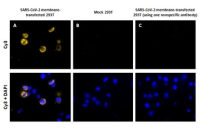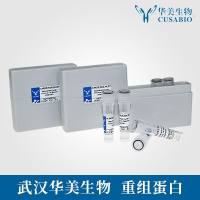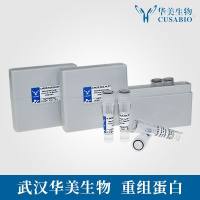Fluorescence Resonance Energy Transfer: Techniques for Measuring Molecular Conformation and Molecular Proximity
互联网
- Abstract
- Table of Contents
- Figures
- Literature Cited
Abstract
This overview unit focuses on the basics of fluorescence and of the FRET phenomenon, and on methods for detecting FRET and data interpretation. FRET is very versatile and there are more application of these basics than can be covered in a single overview. However, some examples are given of applications of various FRET techniques.
Table of Contents
- Basics of Fluorescence and FRET Mechanisms
- Practical FRET Microscopy
- Donor Dequenching After Acceptor Photobleaching
- Donor Fluorescence Lifetime Imaging
- Frequency Domain Lifetime Imaging
- Analysis of FRET Data
- Literature Cited
- Figures
- Tables
Materials
Figures
-
Figure 18.10.1 Energy levels of a molecule. The lowest energy level is electronic energy level 1. The largest jumps in energy are in increasing electronic energy, with smaller jumps due to vibrational and rotational energies, Evib and Erot View Image -
Figure 18.10.2 The Jablonski diagram for excitation of a molecule by a photon followed by fluorescence emission. A molecule in the lowest electronic energy state, the ground state, S0 , absorbs the energy of a photon and is excited to a new electronic energy level, S1 or S2 . Each level is further divided by vibrational energy states. The higher the excited state, the less probable is the transition to this state. A given excited state quickly relaxes to its lowest level and then relaxation to the lowest level of S1 from any higher state occurs in ∼10−11 sec. After another 10−9 sec the molecule emits a photon (fluorescence) and returns to the ground state. View Image -
Figure 18.10.3 FRET detected in terms of fluorescence anisotropy. Fluorescence from cells expressing a GFP‐tagged protein was excited with polarized light and imaged with analyzers parallel or perpendicular to the excitation polarization. After correcting for instrument factors, anisotropy, r , was calculated as ∼0.32. A fraction of GFP was then bleached and a second measurement of r was made. This was repeated until only ∼20% of initial fluorescence remained. Anisotropy increases to ∼0.36 as more and more fluorescence was bleached. The change in r with fluorophore bleaching shows that FRET occurs between GFP molecules as described in the text. Data are from Rocheleau et al. (). View Image -
Figure 18.10.4 Excitation and emission spectra of a FRET donor/acceptor pair, fluorescein and Texas Red (sulforhodamine). The extensive overlap of the donor fluorescence emission spectrum with the acceptor excitation spectrum implies efficient FRET between the two. However, note that the emission of fluorescein extends to 600 nm and beyond. This red emission must be subtracted from the total signal when measuring Texas Red fluorescence (sensitized acceptor fluorescence). View Image -
Figure 18.10.5 Comparison of FRET measured in terms of donor‐sensitized acceptor fluorescence (Fa /CFP ordinate) with FRET measured in terms of donor dequenching after bleaching acceptor (Eapp (%) abscissa). Points are experimental values; the solid line is the theoretical relationship expected. Reproduced from Zal et al. () with permission. View Image -
Figure 18.10.6 FRET measured in terms of donor dequenching compared for live and fixed cells. The fluorophores are CFP and YFP. Both graphs show a strong dependence of FRET on acceptor concentration (measured as fluorescence). View Image -
Figure 18.10.7 Fluorescence lifetime imaging by impulse fluorimetry. Fluorescence is excited by a picosecond laser pulse at time 0. A gated intensified CCD camera is activated for two short intervals, t1 and t2, each a few nanoseconds. The pulse and collection is repeated until sufficient photons are stored in each pixel of the CCD to yield an image. While only a few gates are opened, the lifetime can be inferred from the fit of the data to the theoretical curve for decay of fluorescence after excitation. View Image -
Figure 18.10.8 The basis for frequency domain lifetime measurement. A fluorophore excited by light whose intensity varies as a sine wave emits fluorescence whose intensity varies with the same frequency, but out of phase. The phase shift depends on the lifetime of the excited state and so can this lifetime can be recovered from the signal. Changes in lifetime, over time or space, can be used to detect FRET. Based on Bastiaens and Squire (). View Image -
Figure 18.10.9 The theory for distinguishing FRET in a randomly distributed population from FRET among clustered or aggregated molecules. Three possible distributions of donors and acceptors are shown in the top panel. The graphs in the bottom panel show the expected dependence of FRET on acceptor surface density in experiments detecting FRET in terms of donor dequenching. It can be seen that FRET among randomly distributed molecules depends upon the amount of acceptor present, but is independent of the ratio of donors to acceptors. In contrast, in the lower right panel in can be seen that FRET is independent of the amount of acceptor present, but depends upon the ratio of donors to acceptors. The middle panel shows an intermediate case with some FRET between randomly distributed molecules and some FRET within clusters of these molecules. (after Kenworthy and Edidin, ). View Image
Videos
Literature Cited
| Literature Cited | |
| Adams, S.R., Campbell, R.E., Gross, L.A., Martin, B.R., Walkup, G.K., Yao, Y., Llopis, J., and Tsien, R.Y. 2002. New biarsenical ligands and tetracysteine motifs for protein labeling in vitro and in vivo: Synthesis and biological applications. J. Am. Chem. Soc. 124:6063‐6076. | |
| Bastiaens, P.I.H. and Squire, A. 1999. Fluorescence lifetime imaging microscopy: Spatial resolution of biochemical processes in the cell. Trends Cell Biol. 9:48‐52. | |
| Beecham, J.M. 1992. Global analysis of biochemical and biophysical data. Methods Enzymol. 210:37‐54. | |
| Beecham, J.M., Knutson, J.R., Ross, J.B.A., Turner, B.W., and Brand, L. 1983. Global resolution of heterogeneous decay by phase/modulation fluorometry: Mixtures and proteins. Biochemistry 22:6054‐6058. | |
| Catipovic, B., Talluri, G., Oh, J., Wei, T., Su, X‐m., Johansen, T.E., Edidin, M., and Schneck, J.P. 1994. Analysis of the structure of empty and peptide‐loaded major histocompatibility complex molecules at the cell surface. J. Exp. Med. 180:1753‐1761. | |
| Clayton, A.H., Hanley, Q.S., Arndt‐Jovin, D.J., Subramaniam, V., and Jovin, T.M. 2002. Dynamic fluorescence anisotropy imaging microscopy in the frequency domain (rFLIM). Biophyis J. 83:1631‐1649. | |
| Clegg, R.M. 1996. Fluorescence resonance energy transfer spectroscopy and microscopy. In Fluorescence Imaging Spectroscopy and Microscopy. (X.F. Wang and B. Herman, eds.) pp. 179‐252. John Wiley & Sons, New York. | |
| Dewey, T.G. and Hammes, G.G. 1980. Calculation of fluorescence resonance energy transfer on surfaces. Biophys. J. 32:1023‐1035. | |
| Elangovan, M., Day, R.N., and Periamsamy, A. 2002. Nanosecond fluorescence resonance energy transfer‐fluorescence lifetime imaging microscopy to localize the protein interactions in a single living cell. J. Microscopy 205:3‐14. | |
| Gaietta, G., Deerinck, T.J., Adams, S.R., Bouwer, J., Tour, O., Laird, D.W., Sosinsky, G.E., Tsien, R.Y., and Ellisman, M.H. 2002. Multicolor and electron microscopic imaging of connexin trafficking. Science 296:503‐507. | |
| Gautier, I., Tramier, M., Durieux, C., Coppey, J., Pansu, R.B., Nicolas, J.C., Kemnitz, K., and Coppey‐Moisan, M. 2001. Homo‐FRET microscopy in living cells to measure monomer‐dimer transition of GFP‐tagged proteins. Biophys. J. 80:3000‐3008 | |
| Gordon, G.W., Berry, G., Liang, X.H., Levine, B., and Herman, B. 1998. Quantitative fluorescence resonance energy transfer measurements using fluorescence microscopy. Biophys. J. 74:2702‐2713 | |
| Inoue, S., Shimomura, O., Goda, M., Shribak, M., and Tran, P.T. 2002. Fluorescence polarization of green fluorescence protein. Proc. Natl. Acad. Sci. U.S.A. 99:4272‐4277. | |
| Jovin, T.M. and Arndt‐Jovin, D.J. 1989. Luminescence digital imaging microscopy. Ann. Rev. Biophys. Biophys. Chem. 18:271‐308. | |
| Kenworthy, A.K. and Edidin, M. 1998. Distribution of a GPI‐anchored protein at the apical surface of MDCK cells examined at a resolution of <100 Å using imaging fluorescence resonance energy transfer. J. Cell Biol. 142:69‐84. | |
| Kenworthy, A.K. and Edidin, M. 1999. Imaging fluorescence resonance energy transfer as probe of membrane organization and molecular associations of GPI‐anchored proteins. Methods Mol. Biol. 116:37‐49. | |
| Kenworthy, A.K., Petranova, N., and Edidin, M. 2000. High resolution FRET microscopy of cholera toxin B‐subunit and GPI‐anchored proteins in cell plasma membranes. Mol. Biol. Cell 11:1645‐1655. | |
| Kuhn, H. 1987. Energy transfer mechanisms. In Biophysics (W. Hoppe, W. Lohmann, H. Markl, and H. Ziegler, eds.) pp. 279‐288. Springer‐Verlag, Berlin. | |
| Lakowicz, J.R. 1999. Principles of Fluorescence Spectroscopy. Kluwer Academic/Plenum, New York. | |
| Matko, J. and Edidin, M. 1997. Energy transfer methods for detecting molecular clusters on cell surfaces. Methods Enzymol. 278:444‐462. | |
| Matko, J., Bushkin, Y., Wei, T., and Edidin, M. 1994. Clustering of class I HLA molecules on the surfaces of activated and transformed human cells. J. Immunology 152:3353‐3360. | |
| Murakoshi, H.R., Iino, C., Yasui‐Oshima, T., Kobayashi, M., Murakami, S., Minoguchi, A., Yoshimura, and Kusumi, A. 2002. H‐ras activation and induction of localized signalling as studied by single molecule fluorescence energy transfer. Biophys J. 82:47A. | |
| Murphy, D.B. 2001. Fundamentals of Light Microscopy and Electronic Imaging. John Wiley & Sons, New York. | |
| Pentcheva, T. and Edidin, M. 2001. Clustering of peptide‐loaded MHC class I molecules for ER export imaged by fluorescence resonance energy transfer. J. Immunology 166:6625‐6632. | |
| Pentcheva, T., Spiliotis, E.T., and Edidin, M. 2002. Tapasin is retained in the endoplasmic reticulum by dynamic clustering and exclusion from endoplasmic reticulum exit sites. J. Immunol. 168:1538‐1541. | |
| Periasamy, A. (ed.) 2001. Methods in Cellular Imaging. American Physiological Society/Oxford University Press, New York. | |
| Rocheleau, J.V., Edidin, M., and Piston, D.W. 2002. Monitoring the membrane rotational mobility of the MHC class I protein using an intra‐sequence expressed GFP construct. Biophys. J. 82:627A. | |
| Runnels, L.W. and Scarlatam, S.F. 1995. Theory and application of fluorescence homotransfer to melittin oligomerization. Biophys. J. 69:1569‐1583. | |
| Selvin, P.R. 2000. The renaissance of fluorescence resonance energy transfer. Nat. Struct. Biol. 7:730‐734. | |
| Sharman, K.K., Demsas, J.N., Ashworth, H., and Periasamy, A. 1999. Error analysis of therapid lifetime determination (RLD) method for double exponential decays: Evaluating different window systems. Anal. Chem. 71:947‐952. | |
| Spiliotis, E.T., Pentcheva, T., and Edidin, M. 2002. Probing for membrane domains in the endoplasmic reticulum: Retention and degradation of unassembled MHC class I molecules. Mol. Biol. Cell 13:1566‐1582. | |
| Squire, A., Verveer, P.J., and Bastiaens, P.I.H. 2000. Multiple frequency fluorescence lifetime imaging microscopy. J. Microsc. 191:39‐51. | |
| Szollosi, J., Damjanovich, S., Mulhern, S.A., and Tron, L. 1987. Fluorescence energy transfer and membrane potential measurements monitor dynamic properties of cell membranes: A critical review. Prog. Biophys. Mol. Biol. 49:65‐87. | |
| Torigoe, C. and Metzger, H. 2001. Spontaneous phosphorylation of the receptor with high affinity for IgE in transfected fibroblasts. Biochemistry 40:4016‐4025. | |
| Triantafilou, K., Triantafilou, M., and Dedrick, R.L. 2002. A CD14‐independent LPS receptor cluster. Nat. Immunol. 2:338‐345. | |
| Triantafilou, K., Fradelizi, D., Wilson, K., and Triantafilou, M. 2001. GRP78, a coreceptor for coxsackievirus A9, interacts with major histocompatibility complex class I molecules which mediate virus internalization. J. Virol. 76:633‐643. | |
| Tron, L., Szollosi, J., Damjanovich, S., Helliwell, S.H., Arndt‐Jovin, D.J., and Jovin, T.M. 1984. Flow cytometric measurement of fluorescence resonance energy transfer on cell surfaces. Quantitative evaluation of the transfer efficiency on a cell‐by‐cell basis. Biophys. J. 45:939‐946. | |
| Varma, R. and Mayor, S. 1998. GPI‐anchored proteins are organized in submicron domains at the cell surface. Nature 394:798‐801. | |
| Verveer, P.J., Squire, A., and Bastiaens, P.I.H. 2000. Global analysis of fluorescence lifetime imaging microscopy data. Biophys. J. 78:2127‐2137. | |
| Verveer, P.J., Squire, A., and Bastiaens, P.I.H. 2001. Frequency‐domain fluorescence lifetime imaging microscopy: A window on the biochemical landscape of the cell. In Methods in Cellular Imaging. (A. Periasamy, ed.) pp. 273‐294. American Physiological Society/Oxford University Press, New York. | |
| Werner, T.C., Bunting, J.R., and Cathou, R.E. 1972. The shape of immunoglobulin G molecules in solution. Proc. Natl. Acad. Sci. U.S.A. 69:795‐799. | |
| Wolber, P.K. and Hudson, B.S. 1979. An analytic solution to the Forster energy transfer problem in two dimensions. Biophys. J. 28:197‐210. | |
| Wu, P. and Brand, L. 1994. Resonance energy transfer: Methods and applications. Anal. Biochem. 218:1‐13. | |
| Zacharias, D.A., Violin, J.D., Newton, A.C., and Tsien, R.Y. 2002. Partitioning of lipid‐modified monomeric GFPs into membrane microdomains of live cells. Science 296:913‐916. | |
| Zal, T., Zal, M.A., and Gascoigne, N.R. 2002. Inhibition of T cell receptor‐coreceptor interactions by antagonist ligands visualized by live FRET imaging of the T‐hybridoma immunological synapse. Immunity 16:521‐34. |







